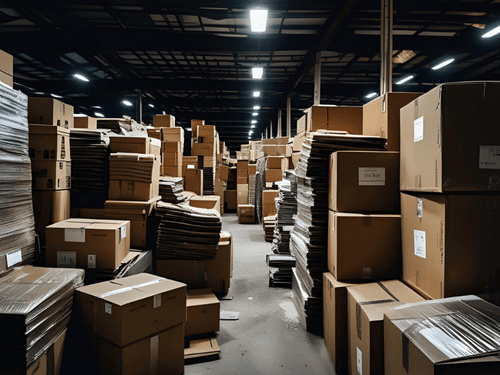Your online store is growing fast. Orders are piling up. Your garage is packed with boxes. Sound familiar?
A fulfillment center might be your answer. These warehouses handle the messy parts of shipping so you can focus on growing your business.
What Is a Fulfilment Center?
A fulfillment center is a warehouse that stores your products and ships them to customers. Think of it as your shipping department on steroids.
Workers receive your inventory, store it on shelves, pick items when orders come in, pack them up, and send them out. They use barcode scanners, conveyor belts, and software to keep everything moving smoothly.
For growing online stores, this setup handles the pick-pack-ship process without you lifting a finger. You get faster shipping and fewer headaches.
Common Fulfilment Challenges

Setting up fulfillment isn’t always smooth. Here are the biggest problems you’ll face:
Inventory tracking gets messy fast. When you have hundreds of products moving in and out, keeping track becomes hard. Poor inventory control means you can’t find items when customers order them. This slows down shipping and annoys customers.
Space runs out quickly. Your warehouse needs smart organization. Bad layout means workers waste time walking around looking for products. Running out of space means you can’t take on more inventory.
Mistakes happen under pressure. Customers want their orders fast and perfect. Wrong items or missing products destroy trust. Even small errors can cost you customers.
The good news? You can solve these problems with the right planning.
Smart Planning Tips for Your Fulfilment Center
Pick the right spot. Location matters more than you think. Choose a place close to your customers or major shipping routes. This cuts shipping time and costs.
Research shows that spreading inventory across strategic locations leads to faster and cheaper shipping. The closer you are to customers, the happier they’ll be.
Consider these factors: distance to customers, highway access, labor costs, and local rules. A warehouse in the middle of nowhere might be cheap, but shipping costs will eat your profits.
Get the tech right. Modern warehouse management systems track everything in real time. They show you exactly what’s in stock and where to find it.
Your software must work with your online store platform. Whether you use Shopify, Amazon, or something else, everything needs to sync up. When systems don’t talk to each other, you get inventory problems.
Automation helps too. Barcode scanners reduce picking errors. Conveyor systems speed up packing. Even simple tools can make a big difference.
Build for growth. Your fulfillment center should grow with your business. Use adjustable shelving systems. Lease space that can expand. Pick equipment that handles more volume.
Plan for busy seasons. Black Friday and Christmas will test your limits. Have backup staff ready. Know how to scale up quickly when orders spike.
Organize like a pro. Put your best-selling items near the packing area. Keep receiving, storage, picking, and packing areas separate. Mark everything clearly.
Train your team on proven methods. First-in-first-out keeps inventory fresh. ABC analysis puts popular items in easy-to-reach spots. Small improvements add up across thousands of orders.
Stay safe and compliant. Follow local warehouse safety rules. Accidents cost money and hurt people. A clean, safe facility also protects your reputation.
Think about the customer experience too. Nice packaging makes customers happy. Custom boxes and inserts show you care about details.
When to Use a 3PL Partner

Sometimes outsourcing makes more sense than building your own fulfillment center. Third-party logistics providers (3PLs) specialize in warehousing and shipping.
Watch for these warning signs: Orders are backing up. Your team spends all day packing boxes instead of growing the business. You’re running out of storage space. Shipping errors are increasing.
3PLs offer real advantages. They have bulk shipping rates you can’t get on your own. Their software is usually more advanced. They can handle seasonal spikes without you hiring temporary workers.
Geographic expansion becomes easier. Want to sell nationwide? A 3PL with multiple warehouses can put your products closer to customers across the country.
Service levels improve. Good 3PLs hit 99% order accuracy. They ship faster than most in-house operations. Your customers get better service while you focus on marketing and product development.
The best 3PLs integrate directly with your online store. You get real-time inventory updates and shipping notifications. It’s like having a professional fulfilment team without the headaches of managing them.
Ready to Scale Your Fulfilment?
Growing online stores need smart fulfilment solutions. Whether you build your own center or partner with a 3PL, the key is planning ahead.
Start with location and technology. Build systems that can grow. Focus on accuracy and speed. Most importantly, choose solutions that let you focus on what you do best: growing your business.
For e-commerce startups and SMEs looking to streamline fulfilment, Vareya offers tailored solutions designed for growing businesses. Visit Vareya’s startup and SME resource page to explore how we can help optimize your fulfillment operations.

